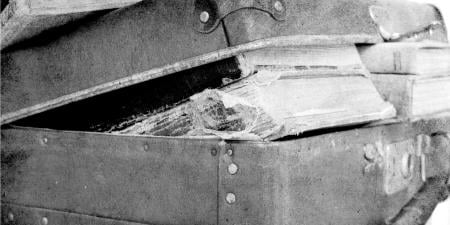Martin Kohn, Director of the Program in Medical Humanities
“Reflective practice” is one of nine competencies required of students in the Cleveland Clinic Lerner College of Medicine (CCLCM) curriculum, and writing is one means of building this reflective capacity. A systematic analysis of reflective writing research suggests a relationship between reflective insight and practice outcomes [1]. But the literature also indicates that a single feedback loop (a student writing his or her thoughts down on paper—which is to say, conversing with him- or herself only) is not sufficient and that there is much to be gained through feedback from two additional sources—mentors and peers [2]. I was intrigued by the idea of creating a fourth feedback loop that aims to build a moral community to support individuals engaged in reflective practice. Development of such a community is one of the goals advocated in a recently published Carnegie Foundation report [3]. What follows is a description of a required reflective writing experience designed to give first-year CCLCM students four kinds of feedback. The reflective writing experience is part of a curriculum that incorporates presentations, readings and performances from medical humanities, bioethics, and the creative and performing arts [4].
My goal as the new course co-director for the Foundations of Clinical Medicine (FCM) seminar was to provide a cohesive and comprehensive experience for our students. My first decision was to give an appropriate title to the seminar, changing it from the generic Foundations of Clinical Medicine seminar to The Call of Medicine. This change reflects one of the goals of the course: vocational identity development. The course’s multiple-block structure explores the notion that one is called to a life in medicine from multiple perspectives.
Four of the five thematic blocks in The Call of Medicine—Call of the Profession, Call of the Body, Call of Justice, and Existential Calls...Meaning in a Life in Medicine—include reflective writing assignments. A topically relevant writing prompt is assigned at the beginning of each of those blocks. The student’s written response to the prompt is sent to his or her physician mentor (small group leader), who responds, providing the second type of feedback. A third feedback opportunity occurs near the end of the seminar, when students share their reflective writing (either verbatim or in summary form) in small group sessions. The fourth feedback source is metareflective: a culminating event for all involved in the seminar presented through a work of art.
We are fortunate to have a playwright-in-residence for The Call of Medicine. Eric Coble, winner of the Cleveland Arts Prize and one of our nation’s leading young playwrights, creates a dramatic piece 15-20 minutes in length that captures the experience of our students. The primary source material for his script is the (de-identified) writing produced by our students, which he combines with his own material based on the themes discussed in class. His dramatic vignette is performed by professional actors during the final session. The performance is followed by a large group discussion, which, building upon student self-critique and mentor and peer critical exchange, helps bring to a close our communal focus on one particular callto morally responsible practice.
In 2011, in addition to the on-campus dramatic presentations, two of the scenes were performed as part of a larger production, Voices of Healing, at a community arts festival sponsored by the Cleveland Play House. More than 130 people attended this performance, including approximately 15 CCLCM students. A 20-minute postperformance talkback session capped the event, providing our students additional public feedback. What follows are additional perspectives on this reflective writing experience from two first-year students and our playwright-in-residence.
Janine Bernardo, First-Year Medical Student
I felt uncomfortable the first time I asked a complete stranger to undo the tiny bow that held together her paper-thin gown. I felt a similar uneasiness when I peeled away the flesh of a newly deceased person. And yet there was more distress when a noncompliant patient told me why he refused to take his hypertension medication: “I don’t want to lose my erections.”
In these situations there is a common vein that runs throughout: these individuals are exposed. I saw and felt and heard things I did not think I should have. Yet, it comes with the territory; I must face these situations with compassion and honesty and respect. It is my role as a medical student.
When I first heard my words and the inner workings of my classmates exposed to an audience I felt a similar discomfort. I didn’t want to hear what worried them about medicine. Yet, just as I have begun to find ease in asking a patient to undress, I have begun to find peace in hearing the vulnerabilities of my peers, as well as sharing my own. I feel empowered when I hear the words I wrote echoed by others. I believe that it is our responsibility as students to travel to the core of our own ideas and beliefs. In doing so we disclose our strengths and weaknesses and participate in a continual journey of learning, of making better.
Exposure, I have found, is not such a bad thing.
Daniel Huck, First-Year Medical Student
The life of a first-year medical student can be overwhelmingly full of biochemical pathways and anatomical terminology, the components of the history and physical, and how the immune system works. Rushing from clinic to classroom, I often thought that if I could just stop for a second I would be able to figure out what it all meant. The Call of Medicine gave me the opportunity to stop and reflect: on the first time I introduced myself to a patient as a medical student and took his blood pressure, my first day in the anatomy lab, and the first time I saw an end-of-life discussion with a heart- and renal-failure patient.
My own personal revelations become so much richer in the context of those of my peers. I reflected after anatomy lab that our medical training held the risk of our seeing patients as bodies not people. When we came together and watched a dramatization of our experiences, I saw my words melded with those of my classmates into something more than just words. As the actor, portraying a cadaver, rose and began to speak, I felt the power of a living moral community. The act of awakening opened up a dialogue: with the person inside the body, with the unspoken thoughts and feelings of my classmates, and with my own inner fears and vulnerabilities. The Call of Medicine hasn’t given me all the answers, but exposed me to the diverse range of ideas and experiences of those around me. Through exposure has come awakening.
Eric Coble, Playwright-in-Residence
My job, as I saw it, was to be the aesthetic stenographer. I attended all of The Call of Medicine seminars, took notes, talked to students before and after, trying to not only find what subjects and moments sparked a fire in me as an artist, but what repeating threads could be teased out from the presentations and conversations. I then received the reflective writing, all anonymous, all with permission to be used in a theatre piece, and set to work weaving. I scribbled in the margins, drew arrows from one text to another, finding thematic links, well-turned phrases, startling stories, while looking for what would be the most dramatic when spoken, where choral work could be used, what images should be repeated, where there were ways to physically show a moment without words—turning essays into theatre. My guiding principle was to use as much of the students’ writing verbatim as I could, adding only connective tissue and incorporating some images and dialogue inspired by the previous five weeks. This was theirmirror, not mine.
More than once, students commented how useful it was to see what their classmates were thinking—that they were not alone in their hopes, fears, confusion, and wonder. And equally important, I feel, was seeing that their classmates may be coming from radically different places and may have had dramatically different experiences doing the same task—the thoughts going through one’s mind when opening a cadaver may be very common or very individual. I believe we reassured the students that they are part of a bigger community, while opening their eyes to the differences within that community—expanding their vision of themselves, their patients, and their profession.
References
- Mann K, Gordon J, MacLeod A. Reflection and reflective practice in health professions education: a systematic review. Adv Health Sci Educ Theory Pract. 2009;14(4):595-621.
- Shapiro J, Kasman D, Shafer A. Words and wards: a model of reflective writing and its uses in medical education. J Med Humanit. 2006;27(4):231-244.
-
Cooke M, Irby DM, O’Brien BC. Educating Physicians: A Call for Reform of Medical School and Residency. San Francisco: Jossey-Bass; 2010.
- Kohn M. Jumping into our field’s third stream: bioethics, humanities, and the creative arts. Atrium. 2010;1(8):13-15.



